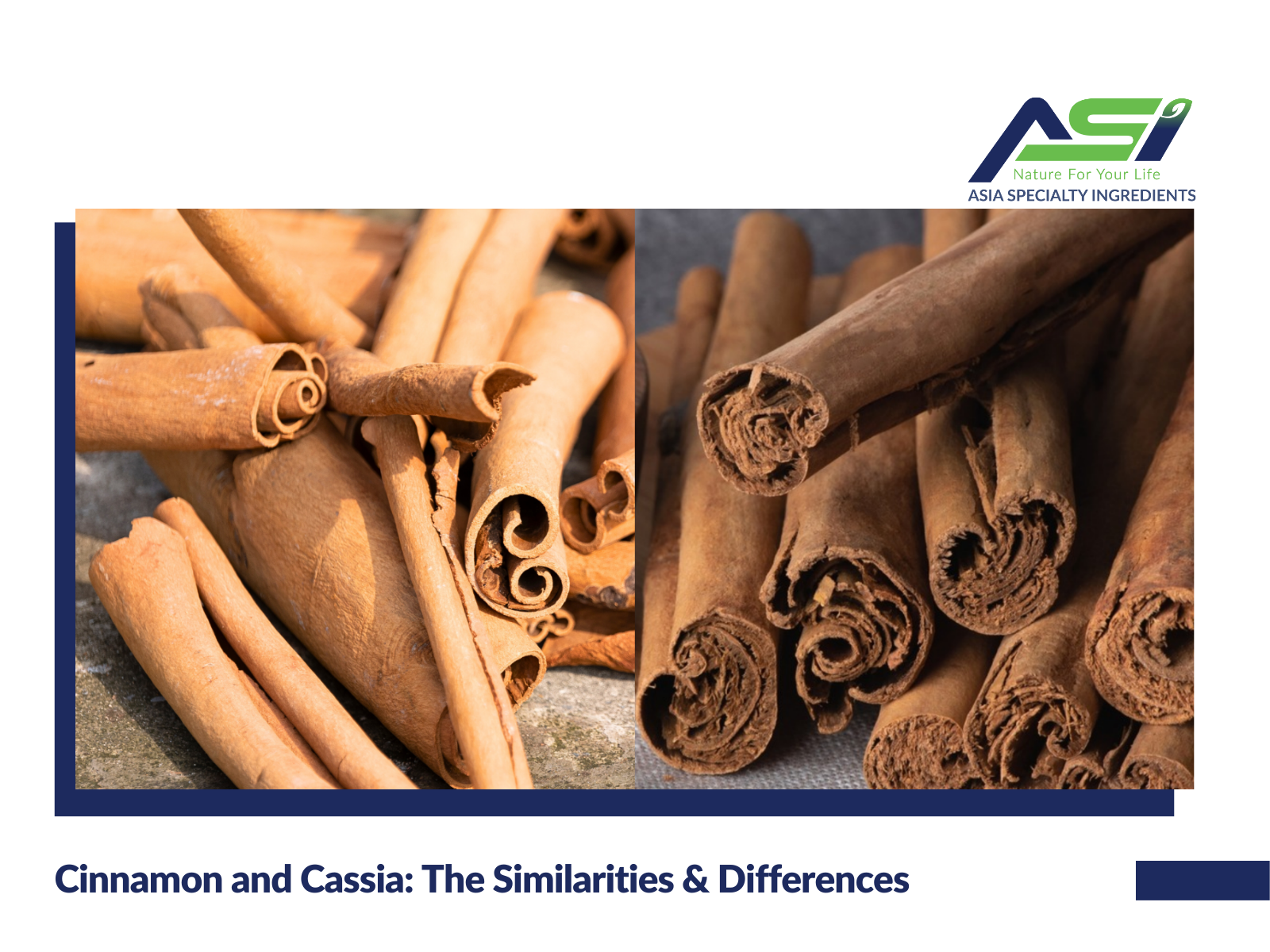While both cassia and cinnamon are derived from the bark of trees belonging to the Cinnamomum genus, they offer similar yet subtly different sensory and health benefits. Cinnamon, specifically Ceylon cinnamon, is known for its delicate, sweet taste and reputed health advantages, including anti-inflammatory and antioxidant properties. Cassia, on the other hand, is more robust and spicy, commonly found in everyday spice racks due to its affordability and stronger flavor.
Understanding the similarities and differences between these two spices not only enhances our appreciation of their unique qualities but also informs better choices in their culinary and therapeutic uses.
Table of Content
ToggleWhat is Cinnamon
Cinnamon is an ancient spice that comes from the bark of several species of the Cinnamomum genus of evergreen trees, which belong to the laurel family. The spice consists of the dried inner bark and has a delicately fragrant aroma and a warm sweet flavor. Cinnamon is used to flavour a variety of foods, from confections to curries to beverages, and is popular in bakery goods in many places. For many centuries, cinnamon and its essential oil have been used as preservatives in food, due to the antioxidant properties of cinnamon.
There are four main species of the spice that are widely used around the world including Cinnamomum cassia, Cinnamomum burmannii, Cinnamomum loureiroi, Cinnamomum verum.
Ceylon cinnamon is also called the ‘true cinnamon’ and it is from Cinnamomum verum, which is native to Sri Lanka and Southern parts of India.

What is Cassia
Cassia is a type of Cinnamon, which derived from different sources, such as Cinnamomum aromaticum or Cinnamomum cassia from China and Vietnam, Indonesian cassia (C. burmannii) from Sumatra and the Java region, and Indian cassia (C. tamala) from the north-eastern region of India. Cassia cinnamon contains high content of cinnamaldehyde. With strong flavor, it’s commonly used in cooking and baking. It is mainly exported to US and Asia while the Ceylon Cinnamon market is Europe.

Similarities Between Cinnamon and Cassia
Cinnamon and Cassia both come from the bark of a tree that is a member of the laurel family. To produce cinnamon, the tree’s bark is harvested, and dried its outer layer is removed. As it dries, the inner bark curls into thin strips, or quills.
The main component from the bark of cassia and cinnamon is cinnamaldehyde, which is responsible for its aroma and flavor.
Cinnamon and cassia have a broad spectrum of medicinal and pharmacological application.
Differences Between Cinnamon and Cassia
| Ceylon Cinnamon | Cassia Cinnamon | |
| Colour | Light brown | Reddish dark brown |
| Formation | Several layers of fold like a cigar | One inward fold with an empty cavity |
| Texture | Soft and fragile. Easy to break | Hard and rough. Difficult to break |
| Flavour & Aroma | Sweet flavour. Soft aroma | Pungent & zesty flavor. Strong aroma |
| Composition | Lower content of Coumarin | Higher content of Coumarin |
| Origin | Sri Lanka | China, India, Vietnam, Indonesia |
| Availability | Expensive. Used in the EU, Western Asia | Low priced. Used in Canada and the USA |
Read more: Vietnam’s Cinnamon Cassia keeps increasing market share in North America & the Europe
Distinguish between Cinnamon oil and Cassia oil
Cassia oil is an essential oil steam distilled from the leaves and bark of the Cinnamomum cassia tree, also known as Chinese cassia or Vietnam cassia. Cassia has a warm, woody aroma with a sweet, slightly balsamic aroma. Cassia oil also has a brown color. It is rarely added to perfumes because of its dark color; its most common use is as a flavoring agent in foods and beverages.
Cinnamon leaf oil is an essential oil originating from Sri Lanka, steam distilled from the leaves of the Cinnamomum zeylanicum of the Lauraceae family. Cinnamon leaf oil has more subtle aroma and lighter in color than Cassia Oil. Cinnamon leaf oil can be used in soap formulations, insect repellants, perfumes or aromatherapy.
Conclusion
In conclusion, while cinnamon and cassia are often used interchangeably in cooking and traditional medicine, they exhibit distinct differences that set them apart. Both spices share a warm, sweet flavor and are derived from the bark of trees in the Cinnamomum genus, contributing to their similar uses and appearance. However, cinnamon, also known as Ceylon cinnamon, is lighter in color, has a more delicate flavor, and contains lower levels of coumarin, a compound with potential health risks when consumed in large amounts. Cassia, on the other hand, is darker, stronger in taste, and more commonly found due to its lower cost.
Asia Specialty Ingredients (ASI), part of Asia Ingredients Group (AIG), specializes in the production and global export of essential oils and natural aromatics. Our range of products is meticulously processed using only the finest natural ingredients sourced from the typical lands of Vietnam, including Cassia, Basil, Star Anise, and more, ensuring good product quality. Contact us for more collaboration opportunity!








